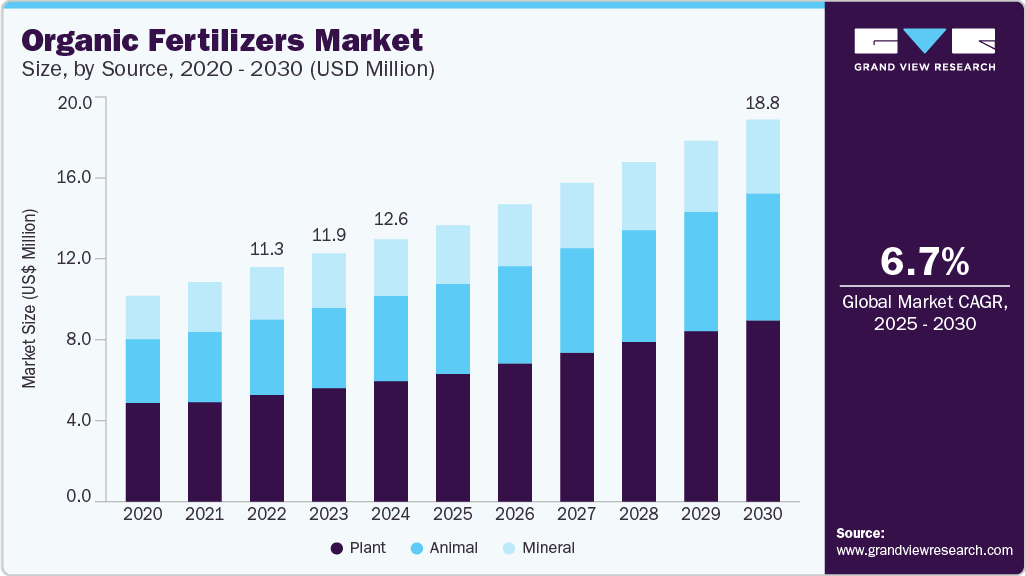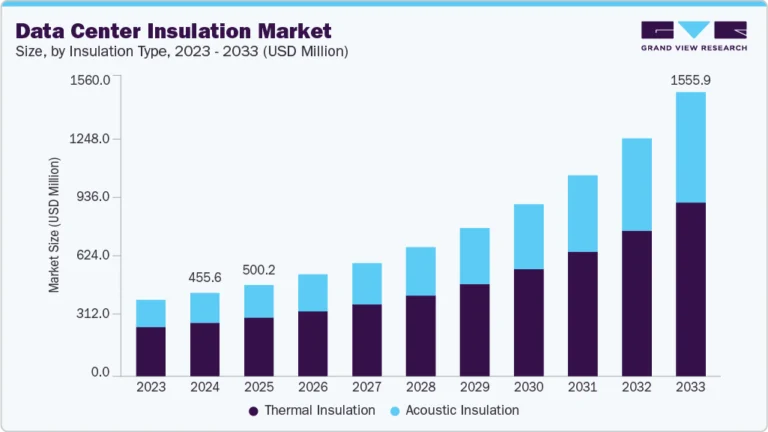Organic Fertilizers Market Size, Share & Trends Analysis growing at a CAGR of 6.7% from 2025 to 2030

The global organic fertilizers market size was estimated at USD 12.6 million in 2024 and is projected to grow at a CAGR of 6.7% from 2025 to 2030. The market is growing owing to increasing awareness among people regarding the detrimental effects of synthetic chemicals on humans and the environment.
Key Highlights:
- The organic fertilizers market in Asia Pacific dominated the global industry with a revenue share of 34.0% in 2024
- China organic fertilizers market is the largest product manufacturer and consumer owing to the presence of large- and small-scale manufacturers.
- In terms of source segment, the animal-based product segment dominated the market in 2024
- In terms of crop type segment, the cereals & grains application segment dominated the market with the highest revenue share of 41% in 2024.
- In terms of form segment, the dry form segment dominated the market in 2024
Request a free sample copy or view report summary: https://www.grandviewresearch.com/industry-analysis/organic-fertilizers-market-report/request/rs1
In addition, there is a rising demand for the product with an increasing shift of people towards organic food, which, in turn, will boost the demand for organic agricultural practices globally. Organic fertilizers are generally made from the residue or waste of plants, animals, and minerals. The plant-based sources include compost, alfalfa meal, soybean meal, and seaweed, among others.
Whereas animal-based sources include manure, bone meal, blood meal, and fish meal, among others. The product is getting promoted by various regulatory bodies at regional and international levels as it increases carbon sequestration in the soil and also helps in reducing greenhouse gas (GHG) emissions. Organic fertilizers improve soil health, resulting in better yields and less dependence on chemical fertilizers and pesticides. Furthermore, the product increases soil microbial activity, resulting in enhanced nutrient availability and improved plant growth. As they contain no synthetic chemicals, they are less likely to pollute the environment.
The major challenge faced by the product industry includes their comparatively lower efficiency as compared to traditional and chemical-based products. Farmers in countries like Vietnam, which are more prone to climate change and global warming, find it difficult to rely entirely on organic products. Hence, some farmers use chemical as well as organic products to maximize their output. Other challenges involved in the market include establishing a consistent supply chain for high-quality organic raw materials. It can be challenging, especially in a region with limited organic waste management infrastructure. Moreover, the product distribution networks are often less developed compared to conventional products, limiting the accessibility of the farmers.





